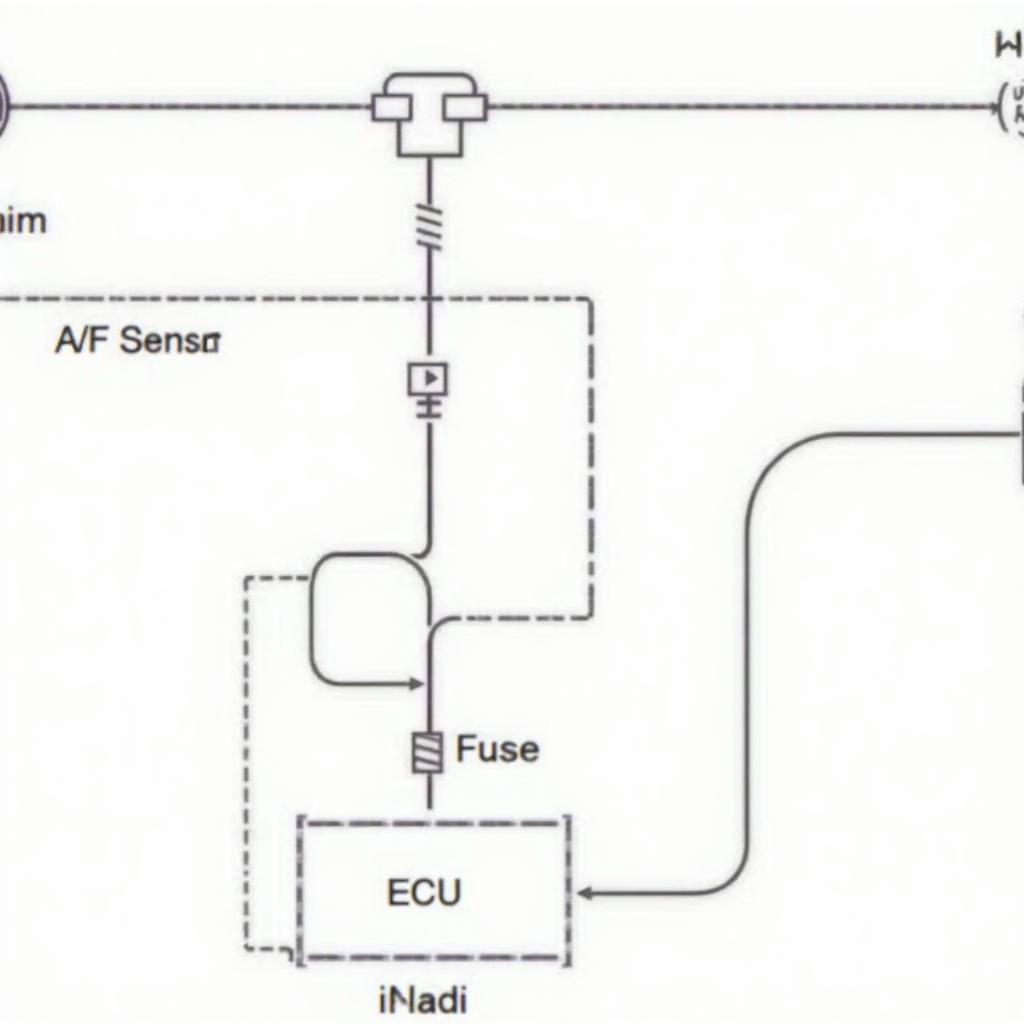The dreaded check engine light has illuminated on your 2002 Honda CRV’s dashboard, and your OBD2 scanner reveals the cryptic code P1167. Don’t panic! This article will delve into the meaning of the 2002 crv obd2 p 1167 code, its potential causes, diagnostic steps, and solutions. We’ll empower you with the knowledge to address this issue effectively and get your CRV back on the road.
Decoding the P1167 Code: What Does It Mean?
The P1167 code, specifically for a 2002 Honda CRV, signifies a problem with the Air/Fuel Ratio (A/F) sensor heater circuit in Bank 1, Sensor 1. This sensor plays a critical role in optimizing fuel efficiency and reducing emissions. The “Bank 1” refers to the side of the engine where cylinder number 1 is located, and “Sensor 1” indicates the sensor positioned closest to the engine. Essentially, the code indicates a problem with the heating element of this vital sensor.
Why is the A/F Sensor Heater Important?
The A/F sensor needs to reach a certain temperature to function correctly. The heater element speeds up this process, allowing the sensor to provide accurate readings to the engine control unit (ECU) faster, especially during cold starts. A malfunctioning heater can lead to inaccurate fuel mixture, decreased fuel efficiency, and increased emissions.
Common Causes of the P1167 Code in a 2002 CRV
Several factors can contribute to the P1167 code:
- Faulty A/F Sensor: The most common culprit is a damaged sensor itself. Over time, the sensor can wear out or become contaminated, requiring replacement.
- Wiring Issues: Damaged, corroded, or loose wiring in the sensor circuit can interrupt the power supply to the heater.
- Blown Fuse: A blown fuse in the A/F sensor heater circuit can cut off power to the sensor.
- ECU Problems: Although less common, a malfunctioning ECU can also cause the P1167 code.
Diagnosing the P1167 Code: A Step-by-Step Guide
- Visual Inspection: Begin by visually inspecting the A/F sensor and its wiring for any obvious damage, corrosion, or loose connections.
- Check the Fuse: Locate the fuse associated with the A/F sensor heater circuit in your CRV’s fuse box. Use a multimeter to test the fuse for continuity. Replace if necessary.
- Test the Sensor: Use a multimeter to test the resistance of the A/F sensor heater element. Compare the readings with the manufacturer’s specifications. A reading outside the specified range suggests a faulty sensor.
- Check the Wiring: Inspect the wiring harness for damage or corrosion. Use a multimeter to check for continuity and voltage in the circuit.
- Consult a Professional: If you are unable to pinpoint the issue, it’s best to consult a qualified mechanic for further diagnosis and repair.
Fixing the P1167 Code
The solution depends on the diagnosed cause:
- Replace the A/F Sensor: If the sensor is faulty, replacement is the only option.
- Repair Wiring: Damaged or corroded wiring should be repaired or replaced. Secure any loose connections.
- Replace the Fuse: Replace any blown fuses.
- Address ECU Problems: If the ECU is the culprit, it may require repair or replacement.
Conclusion: Addressing the 2002 crv obd2 p 1167 code
The P1167 code, while potentially troublesome, is usually a manageable issue. By following the diagnostic steps outlined above, you can effectively identify the cause and implement the necessary repairs. Addressing this issue promptly will ensure optimal performance, fuel efficiency, and reduced emissions for your 2002 Honda CRV.
FAQs
- What does the P1167 code mean? It signifies a problem with the Air/Fuel Ratio sensor heater circuit.
- Can I drive with the P1167 code? While possible, it’s recommended to address it promptly to avoid further issues.
- How much does it cost to replace an A/F sensor? Costs vary, but typically range between $100 and $300.
- How can I prevent the P1167 code from recurring? Regular maintenance and using quality fuel can help.
- Is the P1167 code serious? While not immediately critical, ignoring it can lead to more significant problems.
- Can I fix the P1167 code myself? With some mechanical knowledge, yes. However, consulting a professional is often advisable.
- What tools do I need to diagnose the P1167 code? An OBD2 scanner and a multimeter are essential.
Need further assistance? Contact us via WhatsApp: +1(641)206-8880, Email: [email protected] or visit us at 789 Elm Street, San Francisco, CA 94102, USA. We offer 24/7 customer support.
